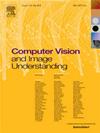Multivariate prototype representation for domain-generalized incremental learning
IF 4.3
3区 计算机科学
Q2 COMPUTER SCIENCE, ARTIFICIAL INTELLIGENCE
引用次数: 0
Abstract
Deep learning models often suffer from catastrophic forgetting when fine-tuned with samples of new classes. This issue becomes even more challenging when there is a domain shift between training and testing data. In this paper, we address the critical yet less explored Domain-Generalized Class-Incremental Learning (DGCIL) task. We propose a DGCIL approach designed to memorize old classes, adapt to new classes, and reliably classify objects from unseen domains. Specifically, our loss formulation maintains classification boundaries while suppressing domain-specific information for each class. Without storing old exemplars, we employ knowledge distillation and estimate the drift of old class prototypes as incremental training progresses. Our prototype representations are based on multivariate Normal distributions, with means and covariances continually adapted to reflect evolving model features, providing effective representations for old classes. We then sample pseudo-features for these old classes from the adapted Normal distributions using Cholesky decomposition. Unlike previous pseudo-feature sampling strategies that rely solely on average mean prototypes, our method captures richer semantic variations. Experiments on several benchmarks demonstrate the superior performance of our method compared to the state of the art.
用于领域泛化增量学习的多变量原型表示法
深度学习模型在使用新类别样本进行微调时,经常会出现灾难性遗忘。当训练数据和测试数据之间发生领域转换时,这个问题就变得更具挑战性。在本文中,我们将讨论领域通用类增量学习(DGCIL)这一关键但探索较少的任务。我们提出了一种 DGCIL 方法,旨在记忆旧类、适应新类,并对来自未见领域的对象进行可靠分类。具体来说,我们的损失公式在保持分类界限的同时,抑制了每个类别的特定领域信息。在不存储旧范例的情况下,我们采用知识提炼的方法,并随着增量训练的进行估算旧类原型的漂移。我们的原型表示法基于多元正态分布,其均值和协方差会不断调整以反映不断变化的模型特征,从而为旧类提供有效的表示法。然后,我们使用 Cholesky 分解法从调整后的正态分布中抽取这些旧类的伪特征。与以往仅依赖平均值原型的伪特征采样策略不同,我们的方法能捕捉到更丰富的语义变化。在多个基准上进行的实验证明,与现有技术相比,我们的方法性能更优越。
本文章由计算机程序翻译,如有差异,请以英文原文为准。
求助全文
约1分钟内获得全文
求助全文
来源期刊

Computer Vision and Image Understanding
工程技术-工程:电子与电气
CiteScore
7.80
自引率
4.40%
发文量
112
审稿时长
79 days
期刊介绍:
The central focus of this journal is the computer analysis of pictorial information. Computer Vision and Image Understanding publishes papers covering all aspects of image analysis from the low-level, iconic processes of early vision to the high-level, symbolic processes of recognition and interpretation. A wide range of topics in the image understanding area is covered, including papers offering insights that differ from predominant views.
Research Areas Include:
• Theory
• Early vision
• Data structures and representations
• Shape
• Range
• Motion
• Matching and recognition
• Architecture and languages
• Vision systems
 求助内容:
求助内容: 应助结果提醒方式:
应助结果提醒方式:


